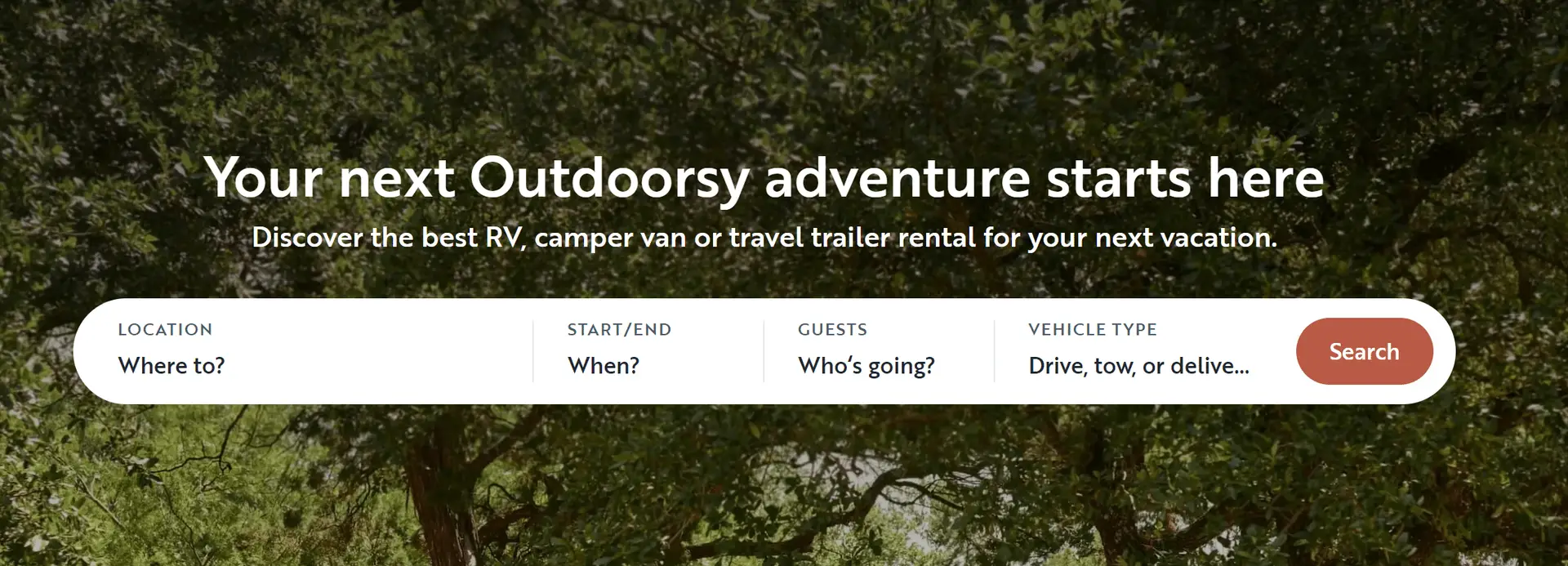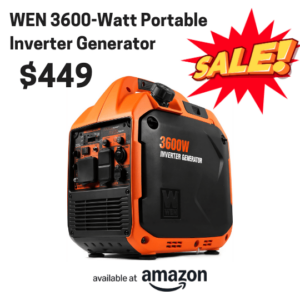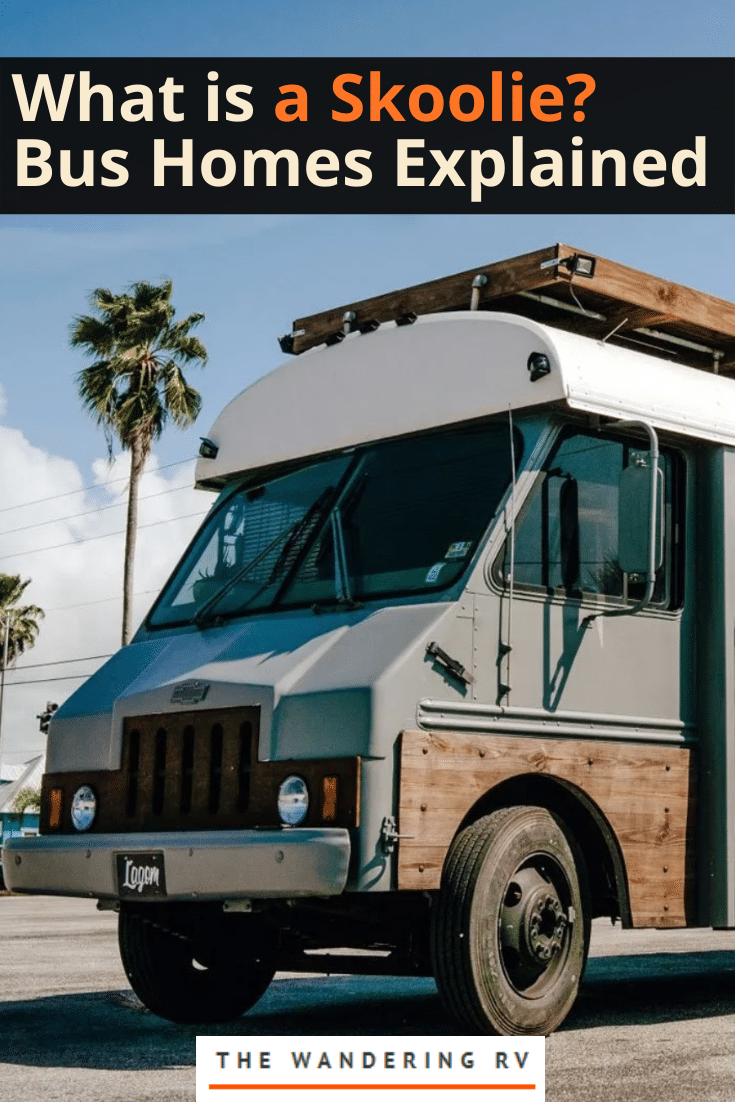
With the rise in popularity of van life and people living in RVs to save money while they travel the country, you may have heard of a “Skoolie”.
But what the heck does that mean? How do you make one? Is it even a good idea to build a skoolie to live out of?
We answer all these questions and more.
Let’s dive in!
Table of Contents
- What is a Skoolie?
- How Do You Convert a School Bus?
- Step One: Find an Old School Bus to Convert
- Step Two: Begin Demolition
- Step Three: Plan Your Interior
- Step Four: Replace Windows, Insulate and Build the Walls, & Replace the Floors
- Step Five: Paint the Exterior, Add Skylights, & Finishing Touches
- Step Six: Plumbing & Getting Down to the Wire (Literally)
- 3 Full-Time Skoolie Families
- Why You May Want to Avoid Skoolies & School Bus Conversions
- Who SHOULD Build a Skoolie?
- School Bus Conversion FAQs
- Is a Skoolie Worth It?
What is a Skoolie?
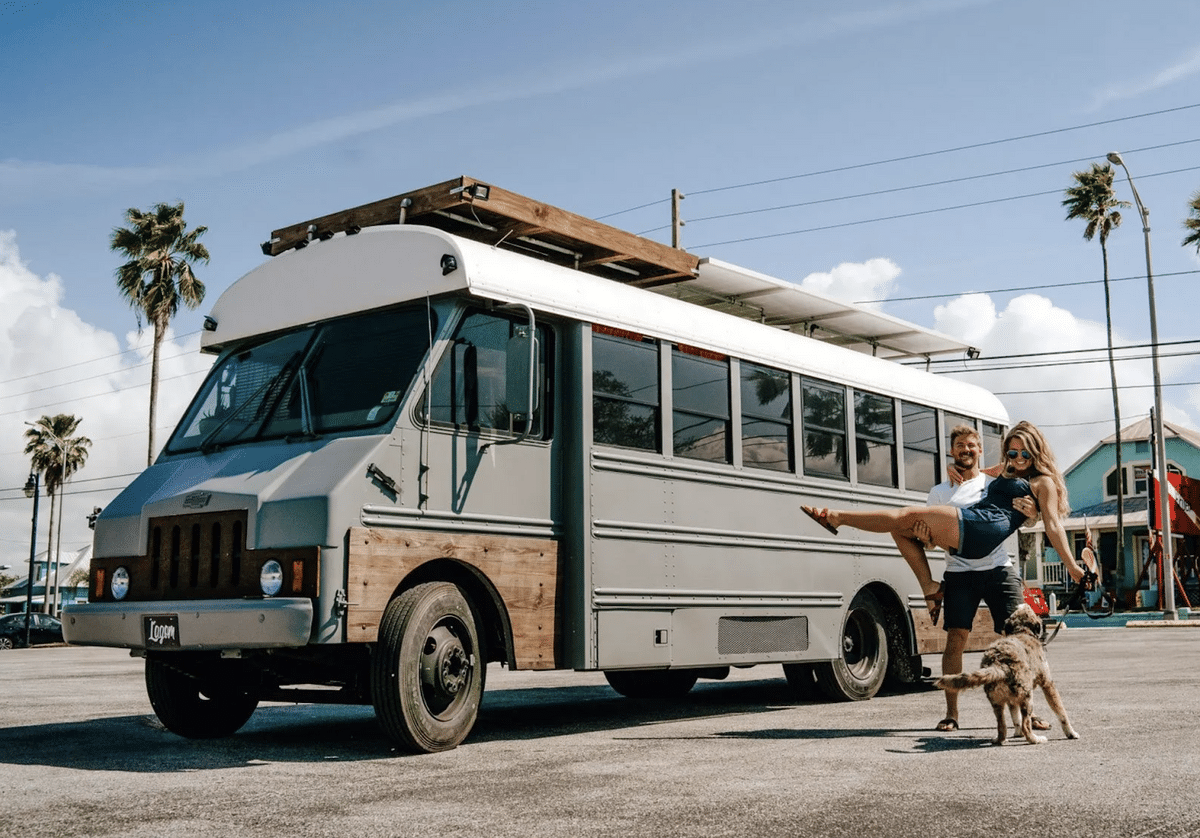
A Skoolie is an old school bus made into a recreation vehicle (RV), typically with the purpose of being lived in or taken on vacations.
Or, in simpler terms, it’s a school bus conversion.
Think of Skoolie conversions as upcycling at its best (if you’re unsure of what upcycling means, it’s essentially the art of taking something that can no longer be used as intended for its original purpose and transforming it to give it a second life and/or new function).
Once all the seats are removed, most school buses are anywhere between 245 and 300 square feet on the inside, giving you an ample amount of room for a tiny house!
How Do You Convert a School Bus?
A Skoolie conversion is no simple task – but that doesn’t mean that it can’t be done.
While we do recommend bringing your used school bus to a professional for a Skoolie conversion, you could attempt to do the bulk of it yourself!
You could also hire a school bus conversion company to do the bulk of the work for you. We know tons of people who have hired a van conversion company and they’ve loved it!
Note: Read our guide on short bus conversions here!
Step One: Find an Old School Bus to Convert
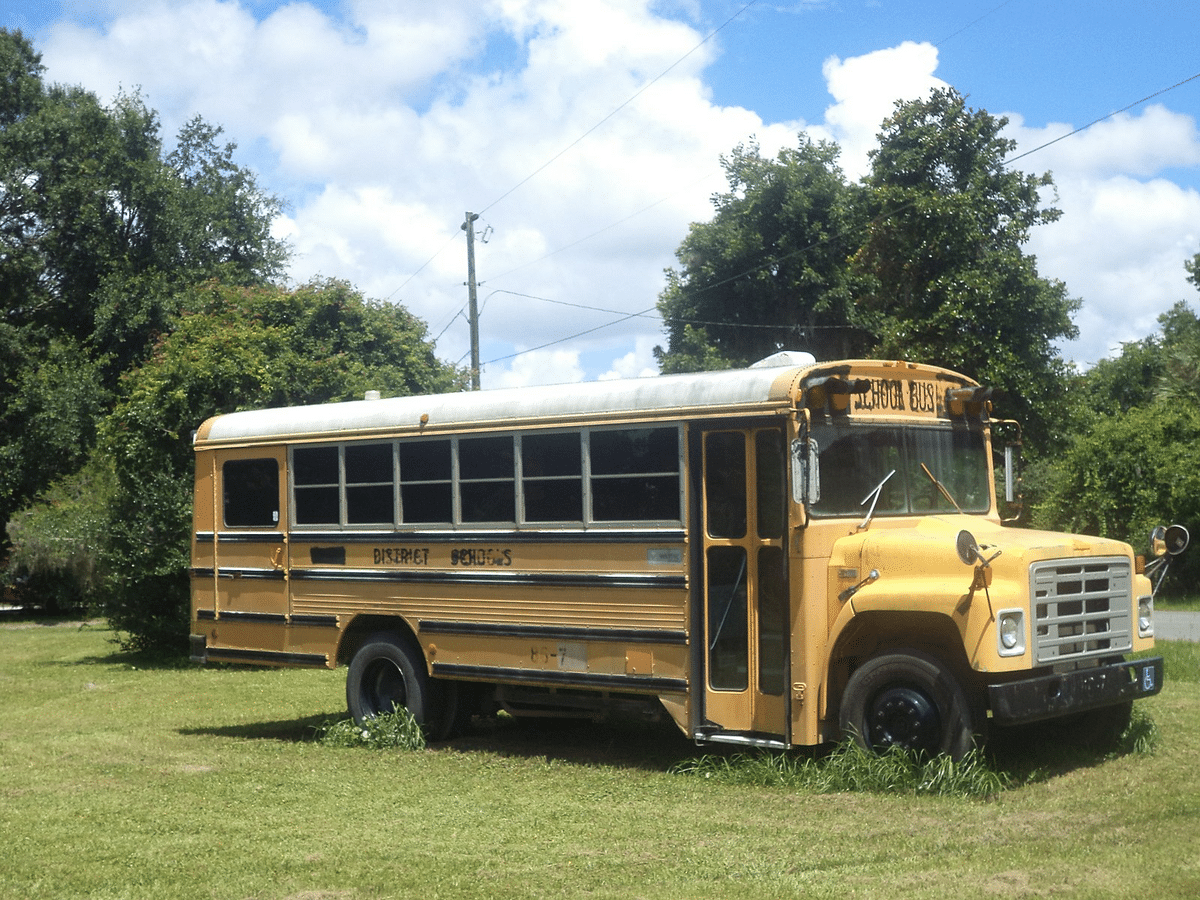
First and foremost, you need a school bus. There are a few places you could look for one, namely:
- Craigslist
- Online auction sites
- Skoolie social media groups
- School district fleet yards
- From a used school bus dealer
Note: Try to find school buses with little to no rust on them. Most of the time, if you want an older bus with zero rust, you’ll have to get it from somewhere hot (like Arizona) that doesn’t salt their roads in the winter.
Surface level rust is okay as it can be sanded off fairly easily, but deep-seated corrosive rust is a no go. This type of rust will destroy the structural integrity of the metal.
Step Two: Begin Demolition
You’ve found the perfect Skoolie to begin your bus conversion, congratulations! Now comes the fun part – gutting the entire thing.
Here are a few things you’ll want to remove from old school busses:
- Rows of seats
- The floor, ceiling, and walls
- Stop sign
- Crossing arm
- School bus wording & decals
- Reflective tape
Once all of this is out of the way, check for surface level rust. If you see any at all, sand it off with a wire wheel and paint over it with rust-protective paint.
Step Three: Plan Your Interior
Now that you’ve got a clean slate, it’s time to design your interior! Here’s what you want to measure:
- Floor dimensions (don’t forget to measure the wheel well protrusions)
- Walls
- Windows
- Ceiling
- Driver’s compartment
- Entrance stairwell
- Emergency exit doors
- Emergency exit ceiling hatches
This is where it gets a bit fancy. We recommend you write down all measurements and then use a 3D modeling program (like Adobe Substance or SketchUp) to start playing around with the layout.
You’re able to use these programs to create a mock up space of your own bus. It starts out as a blank canvas, which is going to be huge when it comes to actually working on the bus conversion, as you’ll already have a general idea of what you can (and can’t) fit into your Skoolie.
Here are some things to think about when using a 3D modeling program:
- Do you want an indoor shower? Or an outdoor shower?
- Do you want a rooftop deck?
- How much extra space do you think you’ll need?
Try to do all the work you can in your 3D modeling program so you don’t run into any surprises when building your Skoolie!
Step Four: Replace Windows, Insulate and Build the Walls, & Replace the Floors
Most older buses have cracked or damaged windows (and some windows simply lack the ability to seal correctly thanks to the old caulking).
A lot of converted Skoolies have larger, panoramic windows to really make these buses feel like a house on wheels. The living area in these full size buses tends to give the illusion that there’s more space with larger windows, too!
When it comes to insulating the walls, you’ve got a few choices:
- Spray Foam Insulation
- Polyisocyanurate Foam Board
- Extruded Polystyrene
- Denim Insulation
- Sheep Wool Insulation
- Classic Fiberglass Insulation
- Ceramic Fiber Insulation
- Thinsulate
We’ve never done a bus conversion ourselves, so we’ll hand this one off to Caleb from Backroad Purpose:
How To Insulate Walls for a School Bus // Skoolie Conversion
Once you’ve got the insulation down, it’s time to build the walls!
Take it away, Matt!
Building New Walls in School Bus Home – Skoolie Build Ep. 10
Here’s Jason from Sow the Land, teaching you how to properly install your flooring:
How to INSTALL FLOORING in a SCHOOL BUS CONVERSION
Step Five: Paint the Exterior, Add Skylights, & Finishing Touches
While you could leave the exterior as is, we’re pretty sure you don’t want to be driving in a bright orange Skoolie. The paint color is completely up to you – it’s your bus conversion, afterall!
Now, if you look up, you’ll find emergency hatches. Chances are, these are worn out and need to be replaced. While you could opt for new emergency hatches… have you thought about adding skylights instead?
Take a look at what Rory and Victoria did in their Skoolie conversion:
Skoolie Skylights | Cheap Skylights Bus Conversion | Ep 13
Your bus conversion is nearly there! Now all that’s left is to build the frame, add the walls, etc! Take a look at this time lapse to get inspiration for your own build:
TIMELAPSE – School Bus to TINY HOUSE – SKOOLIE BUILD start to finish
Step Six: Plumbing & Getting Down to the Wire (Literally)
By now, your Skoolie should be ready to rock and roll. There are, however, a few things that we didn’t cover yet (and don’t recommend you do on your own unless you’re an expert in either of these fields):
- Electric
- Plumbing
We really cannot recommend a professional RV manufacturer or someone with more knowledge on building Skoolies enough for these two things. However, if you’d like to test your skills out, here are some helpful videos we’ve found for you.
For electric, take a look at this video by Tale of two Smittys:
Skoolie Electrical Wiring (Electrical Rough In) || 2020 Bus Conversion Ep. 9
For plumbing, check out this video by Nautical Nomads:
SKOOLIE PLUMBING WALK THROUGH | BUS CONVERSION PLUMBING
Again, do these at your own risk!
Note: Solar panels would be an awesome addition on your bus! Most people living in a home on wheels add solar panels to the roof of their rig to have power in case of emergency (or when boondocking)!
3 Full-Time Skoolie Families
Want to see what living in a school bus from some skoolie owners? We’ve got you covered!
Below are three people from the skoolie community who share their adventures on all social platforms.
From the floor plan to the separate rooms, these skoolies conversions will make you forget that you’re looking at an old school bus!
The Mayes Team
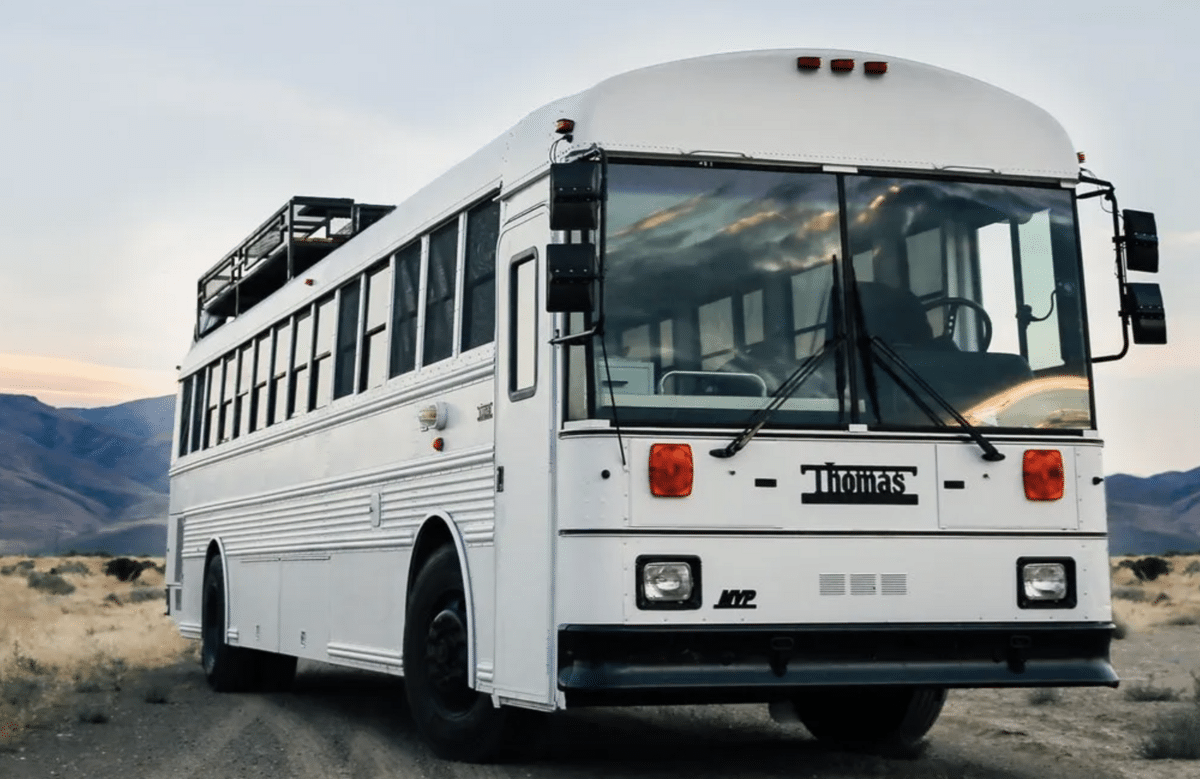
The Mayes Team is a family of 6 who downsized from a 5,000 square-foot home to a Skoolie conversion with 250 square feet of living space. Gabriel & Debbie Mayes designed the perfect tiny home on wheels that suits all of the families needs.
Door to the master bedroom? Check. Individual kids beds? Check. A bathtub to bathe in after long days? Check. Open-plan kitchen space? Check.
They poured their heart and soul into this school bus conversion and had a blast doing it! Check out the interior of their bus conversion:
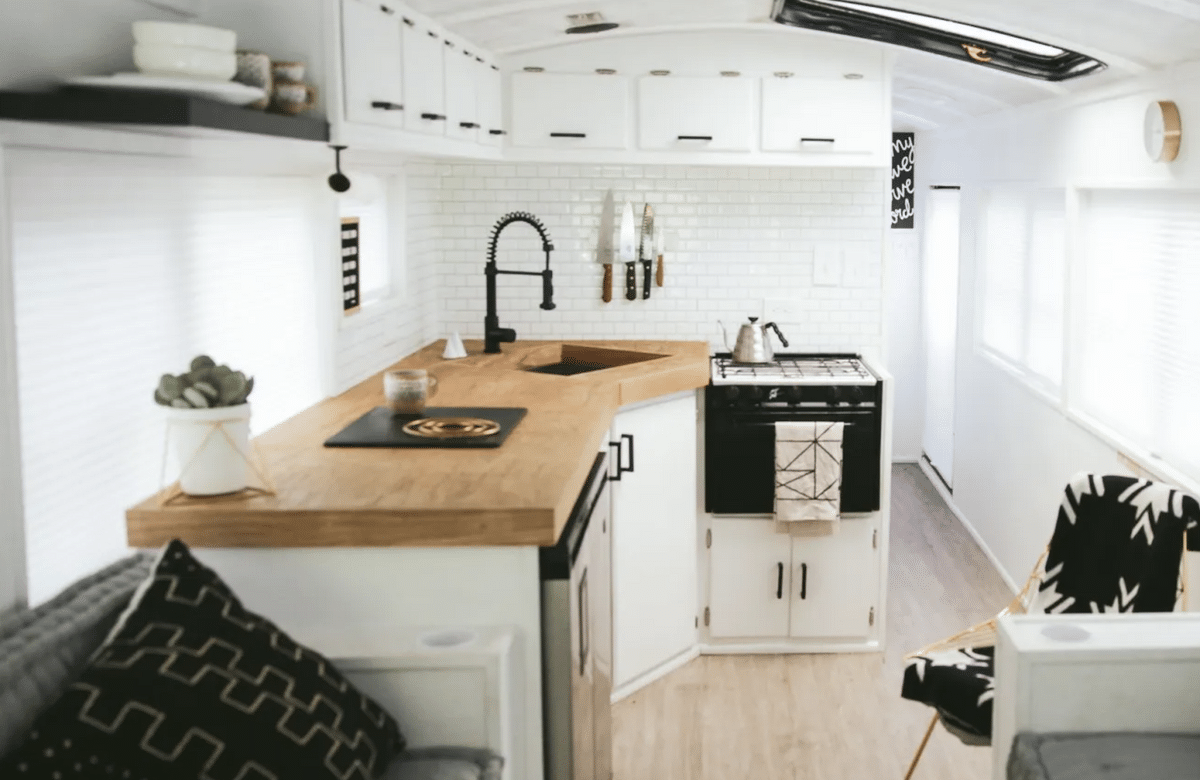
It’s pretty incredible what used school buses can transform into, isn’t it?
Sweet Sweet Bus Life
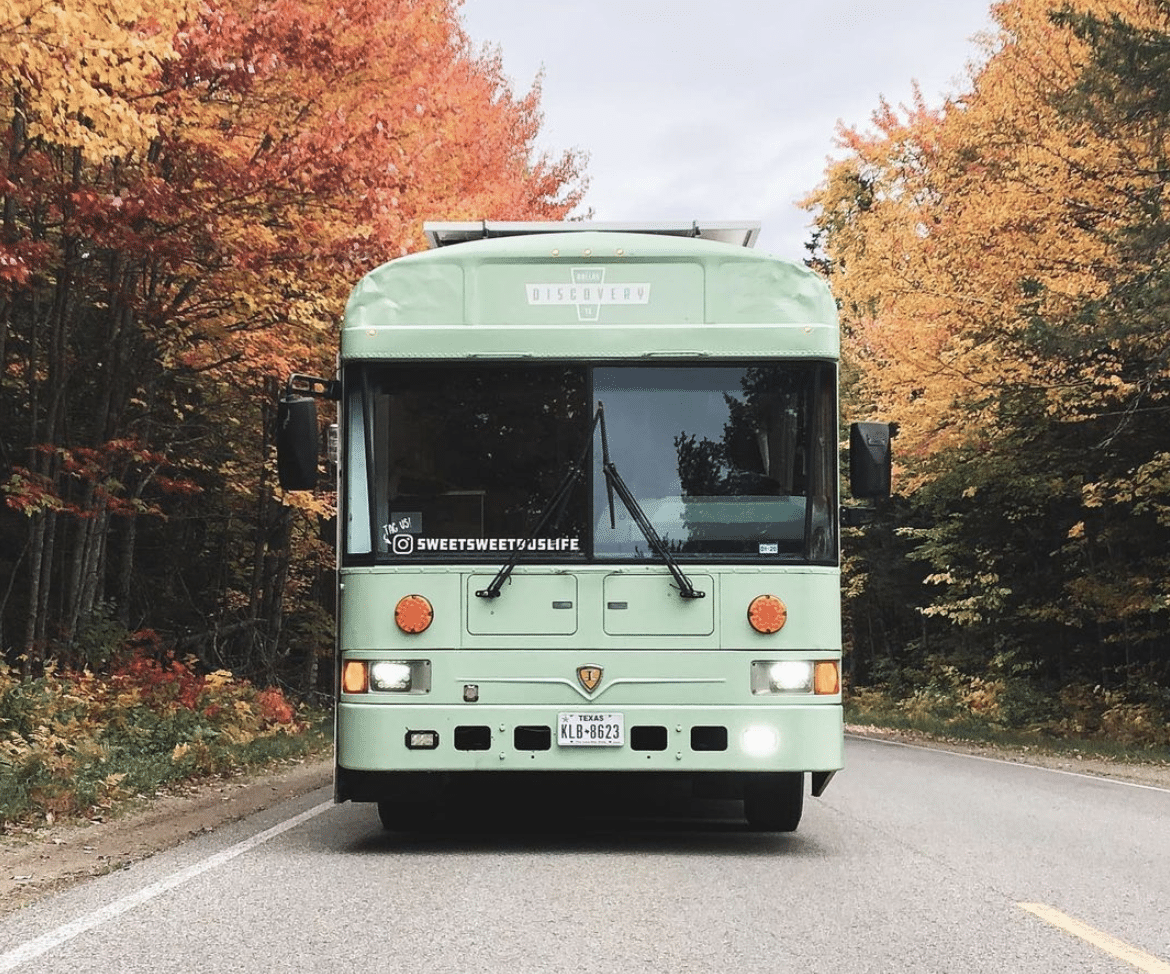
Anna and Jeff are the owners of Sweet Sweet Bus Life.
This family of 7 lives in their skoolie conversion with their pets (they have one cat and two dogs). They’re a family that refuses to say “No” to adventure and love every second of the life they’ve made for themselves.
It’s hard to not be envious of the life they’re living, too! While they have limited space in their skoolie, they make the most of it. Take a look at the interior space in this bus conversion:
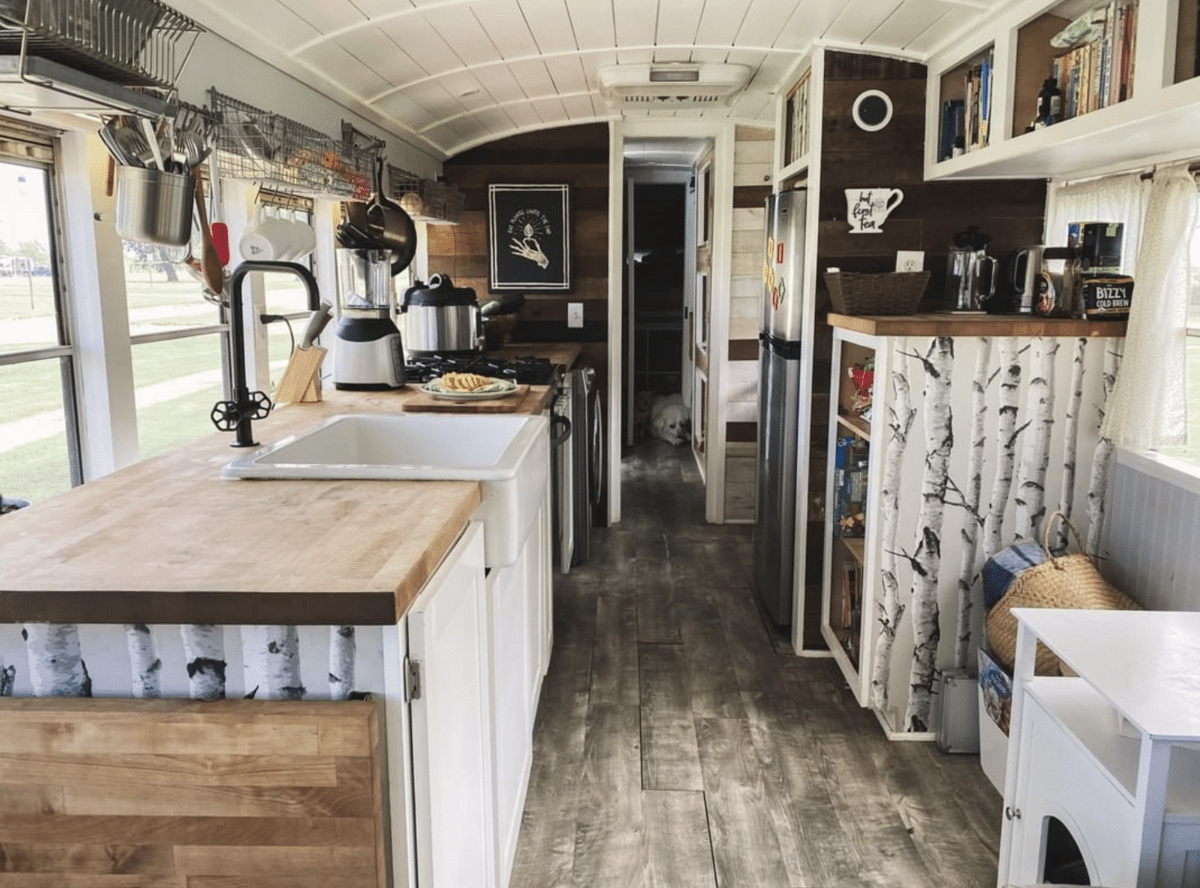
You probably never would have guessed that this was just an old school bus at one point!
Note: Check out our guide if you’re interested in RVing with pets!
The Lucky Bus
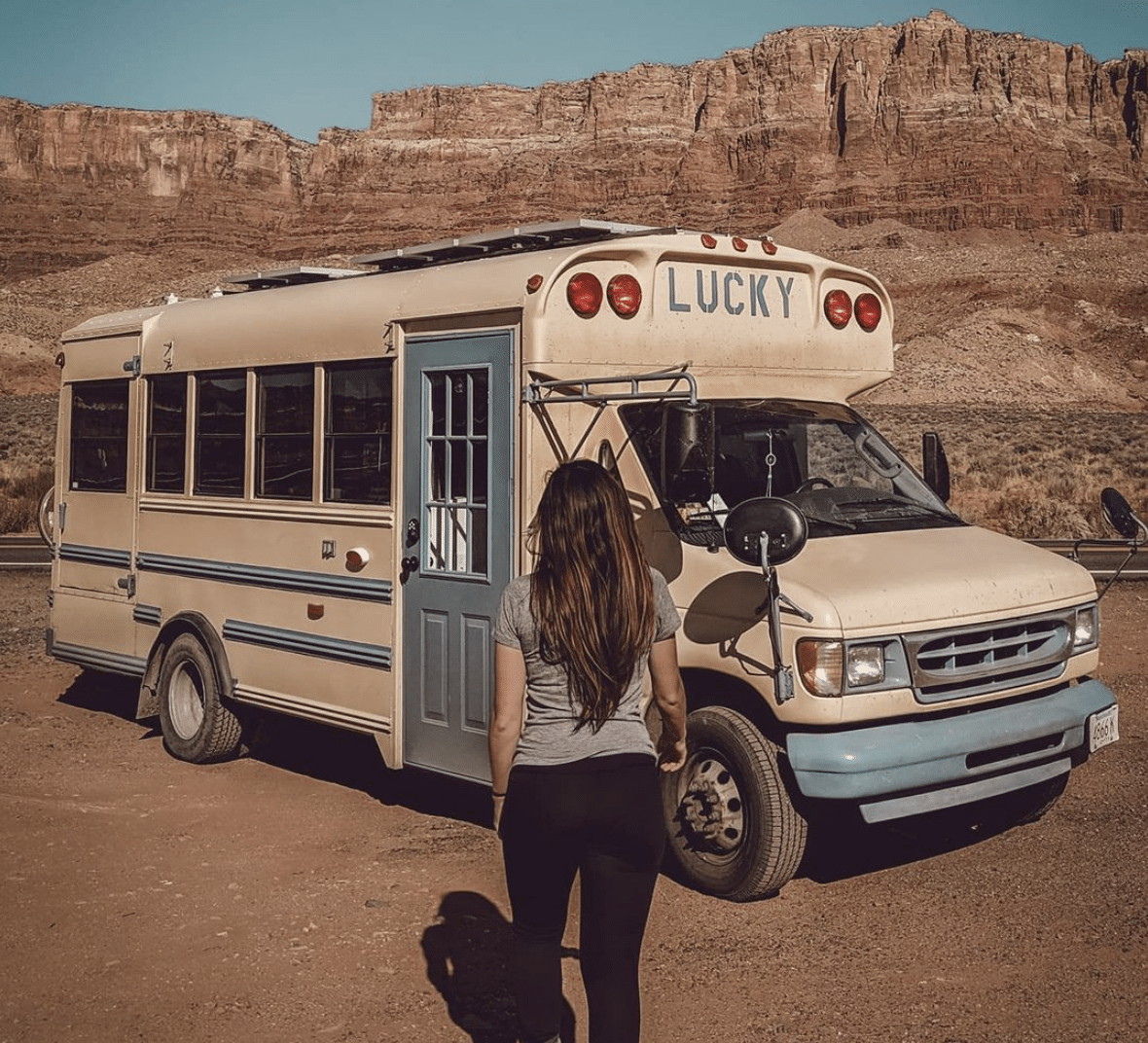
Solo female traveler Alyssa and her dog, Rio, have been living on the road since 2019 in The Lucky Bus (AKA one of the coolest skoolie conversions we’ve seen). Take a tour of this tiny home in this video:
FULL SKOOLIE TOUR of the LUCKY BUS! | Conversion layout with tons of storage.
Note: While Lyss isn’t currently living in The Lucky Bus (it was sold in June 2021), she and Rio are living in a new Skoolie conversion. You can follow her new journey on her YouTube channel.
We really can’t get over how amazing all of these retired school buses look – the interior space is incredible. Each Skoolie is unique to the person living in it.
But, is the Skoolie life for you? Keep reading to find out.
Why You May Want to Avoid Skoolies & School Bus Conversions
We’ve talked a lot about how awesome living in a Skoolie is, but are they practical? Or are they just aesthetically pleasing?
Let’s talk about it.
1. Proper Insurance is Almost Impossible to Get
Most insurance companies are wary about insuring a Skoolie because typically, the owners of these school busses do the conversion work themselves.
A lot of people who DIY their own Skoolies have little to no expertise on electrical/plumbing work, which leaves insurance companies questioning if their Skoolie is safe.
Note: We said it earlier in the article, but we recommend you leave these two things to the professionals. Not only will you have a better chance to get your Skoolie insured, you’ll have the reassurance that everything is done correctly.
2. Buses Aren’t Built for Highway Travel
If you’ve traveled in an RV on the highway, you probably already know that you shouldn’t go over 65 mph.
The same can be said with Skoolies. In fact, most Skoolies often tap out at 65 mph (meaning, even if you wanted to drive faster, you can’t).
3. Many Campgrounds Won’t Allow Skoolies
Many RV parks & RV resorts don’t allow Skoolies to stay on their property. There are a few reasons why:
- Safety Concerns. A lot of RV parks worry that Skoolies are unsafe because they’re typically built by non-professionals. To put it plainly, they worry that your electrical system isn’t up to code (and they worry that when you hook up to their amenities, an electrical fire may start).
- The 10-Year Rule. Did you know that a lot of RV parks follow a 10-year rule? Basically, you’re only able to stay at the park if your rig is 10-years-old or newer. This pretty much eradicates a ton of RVs and Skoolies manufactured before the early 2000s. RV parks will state on their website if they abide by this rule or not but if you’re looking around and can’t find anything, give the one you’re looking at a call!
- Concerns Over Image. As classy as your Skoolie may be, a lot of Skoolies carry a negative stereotype among some RV park owners as looking trashy. They want their RV park to be appealing and anything that could forgo that is out.
Note: When it comes down to the safety of your Skoolie, you may be able to stay at an RV park if you have proof that it’s been inspected by a professional. You’ll need a valid certificate to prove this, though!
4. They Can Be Uncomfortable
Old school busses have a pretty stiff suspension system. Meaning, your ride quality is going to be pretty poor.
Not to mention, if your Skoolie isn’t properly insulated and/or you lack the proper heat and air furnaces, you risk the heat in the summer months and the frigid air in the winter months.
Who SHOULD Build a Skoolie?
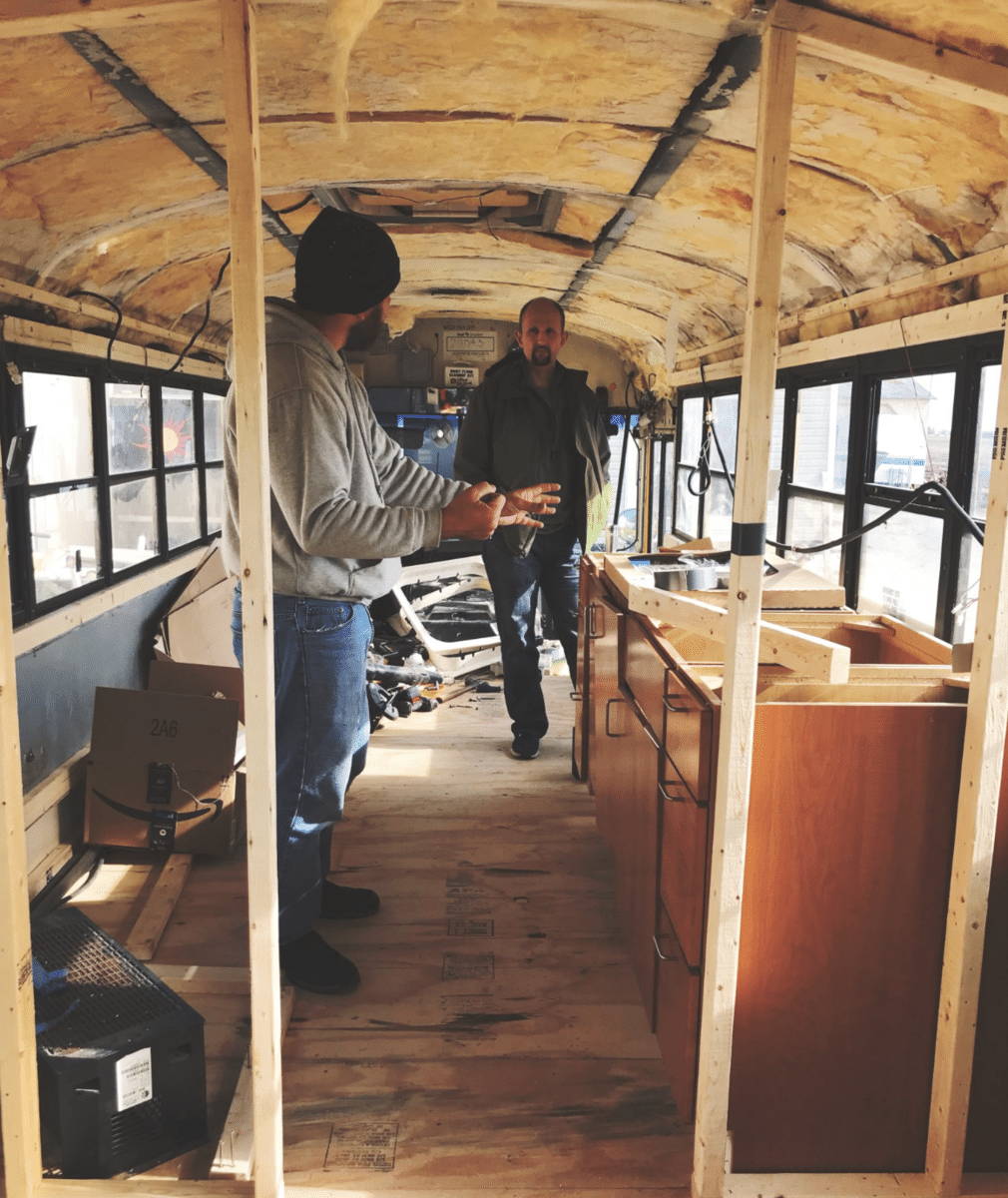
If you want something for fun local travel, building a Skoolie is a great project.
However, we don’t recommend you build one if you plan on living in an RV full time. As we said above, a Skoolie can be hard to insure and a lot of RV parks don’t allow them.
Bus conversions make for an excellent side project (and if you find that you like doing them, you could potentially start a side gig out of it).
School Bus Conversion FAQs
Still have questions? We don’t blame you!
Here are some of the questions we’re asked the most when it comes to bus conversions:
What are the Different Types of School Buses You Can Convert?
Between all the shapes and sizes you have when looking at a school bus to convert, it really comes down to two types of buses:
- High-Geared Mountain Bus
- Low-Geared Highway Bus
A high-geared mountain bus has higher torque and lower top speed. In other words, they have a higher RPM (resulting in poor gas mileage). These buses are great at both climbing and descending and can get through backroads with little to no problems.
If you plan on doing a lot of backcountry exploring, a mountain bus may be the best choice for you. However, this bus is a gas guzzler and we don’t recommend taking it on long highway trips.
A low-geared highway bus is much more efficient when it comes to fuel and mileage. While these buses are still efficient with accelerating and climbing, they’re nowhere near as fast as a mountain bus. They do a lot better in flat areas and, while gas is still a factor, they don’t eat as much of it when you’re on the highway for a decent amount of time.
How Do You Insulate a Skoolie?
As we said before, when it comes to insulating the walls, you’ve got a few choices:
- Spray Foam Insulation
- Polyisocyanurate Foam Board
- Extruded Polystyrene
- Denim Insulation
- Sheep Wool Insulation
- Classic Fiberglass Insulation
- Ceramic Fiber Insulation
- Thinsulate
Because we’ve never added insulation to a Skoolie, we’ll hand this one off to Caleb from Backroad Purpose:
How To Insulate Walls for a School Bus // Skoolie Conversion
How Much Does a Skoolie Conversion Cost?
Typically, your average bus conversions will cost anywhere from $20,000-$30,000. This is for the appliances, equipment, tools, and raw materials.
This doesn’t, however, include the price of the bus nor does it cover the price you may pay when hiring professionals to do the electricity, plumbing, or other skilled labor you’re unable to do.
On average, a used school bus can cost anywhere from $4,000-$30,000+. It depends on the condition the bus is in when you purchase it.
Other prices to consider:
- Annual maintenance on a Skoolie can cost around $2,000 per year
- If your engine or transmission goes on a Skoolie, you’re looking at a price of about $5,000
- An oil change for your Skoolie can cost anywhere from $100-$150
- Tires for your Skoolie cost anywhere from $2,000-$3,000
Which leads us to our next question…
Is a Skoolie Cheaper than an RV?
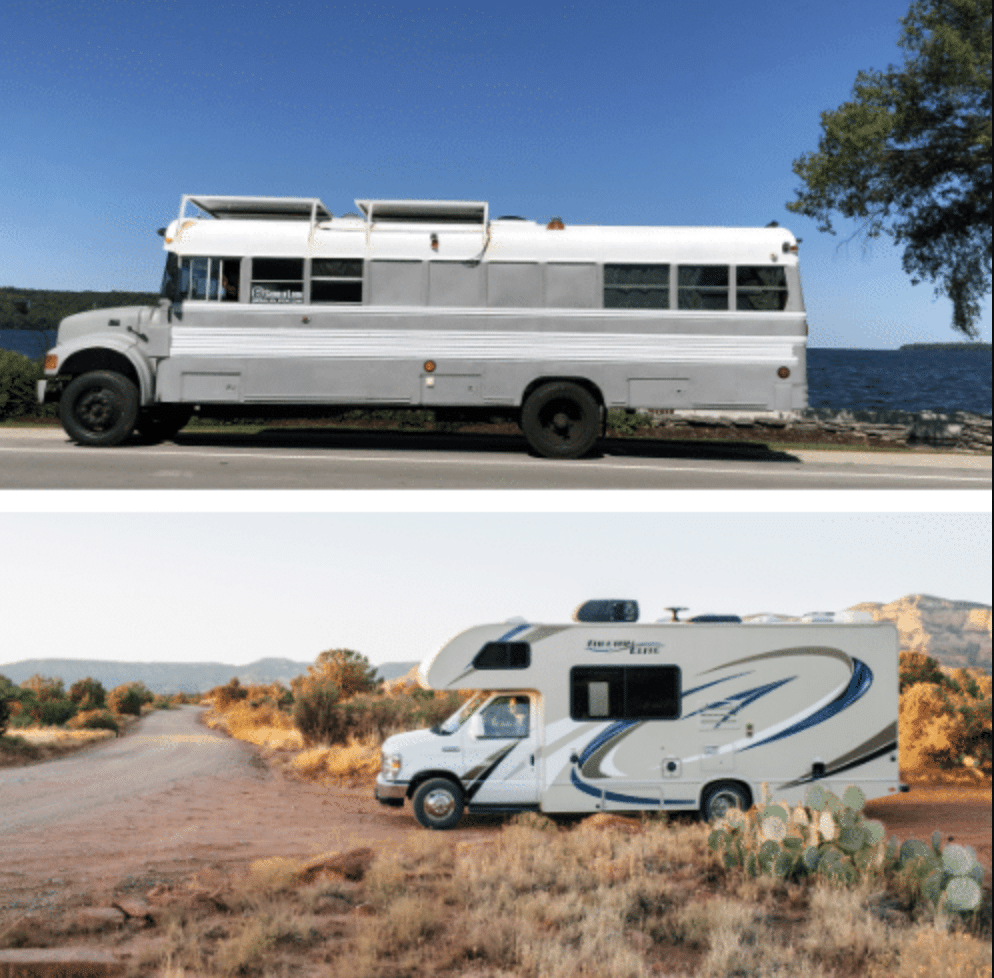
Let’s quickly combine all of the prices we have listed above.
On the low end, a Skoolie could cost you about $28,100 (we got to this number by adding the conversion cost of $20,000 with the lowest price points listed above).
On the high end, a Skoolie could cost $65,150 (this is if you get a brand new school bus listed at $30,000 or more and, again, we added the highest price points listed above).
While $28,100 and $65,150 are the numbers we came up with, don’t quote us! It could be lower, it could be higher. These are just the base prices that you may find when building a Skoolie!
An RV, on the other hand, is very different. Typically, new motorhomes can range anywhere from $100,000-$250,000+. Used RVs can sometimes start at $50,000-$75,000.
When looking at these numbers, a Skoolie is much cheaper than an RV.
Keep in mind that an RV is much easier to insure and RV parks may not take Skoolies!
Do You Need a CDL to Drive Skoolies?
Typically, no. In most cases, once you’ve registered your Skoolie for personal use (AKA as a recreational vehicle), you do not need a CDL to drive it.
That said, however, you may need an air brake certification or special license based on the weight of your Skoolie (depending on your state).
What Kind of Gas Mileage Does a Skoolie Get?
On average, you’ll get anywhere between 6 and 12 MPG depending on the size and weight of your Skoolie.
To get down to the nitty gritty, short buses can get 10 to 12 MPG, mid-size buses can get 6 to 10 MPG, and full-size buses get 9 to 10 MPG.
How Long Does a Skoolie Last?
Depending on how well you take care of your Skoolie, it could last you a very long time. With this said, however, a Skoolie engine typically won’t last you more than 20 years or 250,000 miles.
Is a Skoolie Worth It?
While a Skoolie is one of the coolest ways to travel (and can be a very rewarding project), we truthfully believe that they’re only worth it if you plan on staying local and don’t plan on living in it full-time.
Do you think you’ll build a Skoolie anytime soon? Do you know anyone who has one? Let us know in the comments below!
Related Reading:

